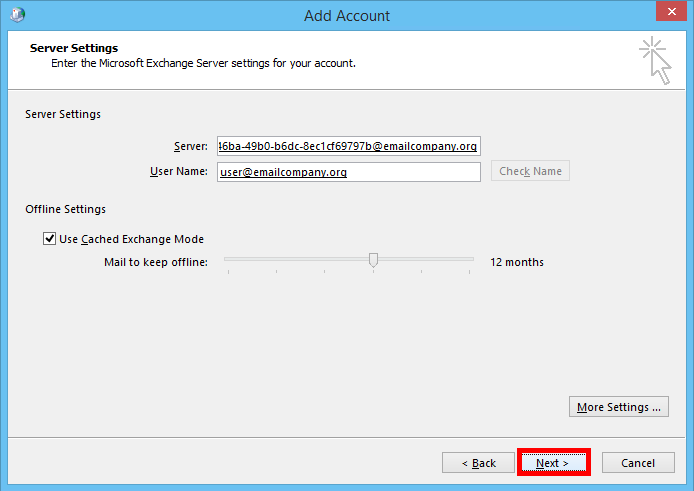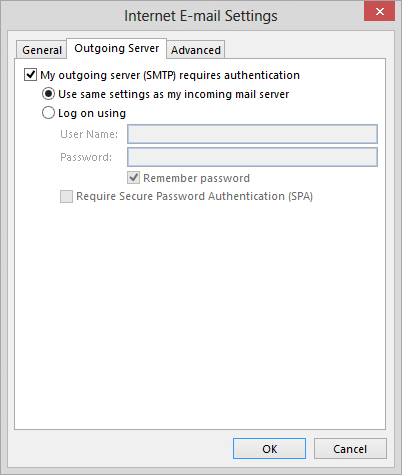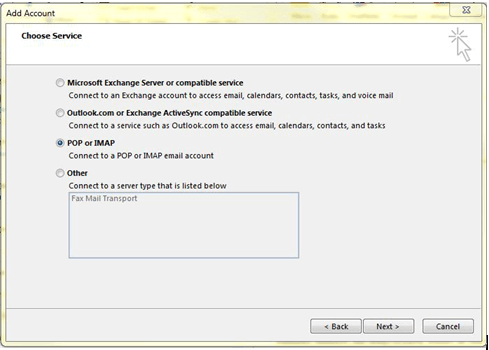

Open the Options and select the “Advanced” category. If you want to keep your mail footprint small and easier to manage, you’ll need to open the options and attend to the AutoArchive setting there. The AutoArchive Settings button is a little confusing since it doesn’t really affect how your inbox automatically archives old mail. Below, you see the Inbox Folder tab, which lets you do all sorts of folder administration (if you’re not using an IMAP account, then you won’t see the IMAP tab). Overall, the Folder tab is fairly consistent across all modes, with the notable exception of the Calendar. Send/Receive options are thus dependent upon how you set up your e-mail accounts, but long story short: we highly recommend IMAP.
#How to setup outlook 2013 email download
The remaining Ribbon tabs – Send/Receive, Folder, View and, of course File – are all largely consistent for whatever mode you’re in. We’ll take a closer look at all of them in the next section.įor example, here we see the Calendar’s Send/Receive tab, which eschews the Server section.ĭepending upon what type of mail protocol you’re using (in the first screenshot, we’re working with an IMAP account), you may or may not have the ability to only download headers, or mark/unmark messages to download, etc.

Note, the Ribbon is pinned so the pushpin has changed to an arrow in case you want to collapse it again (or use “CTRL+F1”). In the above screenshot, we see our options for Mail.īelow, the Home tab has changed to reflect the Calendar’s options. The Home tab on the Ribbon changes contextually depending on the mode you’re in. If you want the Ribbon to persist, you can use “CTRL+F1” or click the small pushpin icon in the bottom-right corner. If you click on any of the menu functions at the top, the Ribbon shows and you can choose functions and tools. That said, always remember, if you want to quickly hide or show the Ribbon, just use CTRL+F1. We don’t need to spend any more time going over the relative merits of their existence, obviously they’re here to stay.

Love them or hate them, Ribbons are everywhere throughout Office. Outlook’s default view is the inbox, along the top is the Ribbon, which is hidden in this view to save screen space. Unlike other popular Office apps, however, Outlook is largely built around its different functions – Word is primarily for creating text documents, Excel is all about spreadsheets, PowerPoint does presentations – but Outlook is a app of many hats. For all intents and purposes, it’s another application in the Microsoft Office ecosystem and as such, it’s going to have quite a few familiar elements. Outlook isn’t going to dazzle you when you first open it. But, that’s okay, Outlook functions just as well on your home computer, and will still provide all the features that make it such a powerful productivity tool: e-mail, tasks, appointments, address books, and much more! Working with Outlook – A Tiny Primer Unfortunately, most folks don’t have an Exchange server set up in their home and probably don’t even know what that is. A typical company can connect Outlook to an Exchange server, and everyone can share the same address book and calendars, making it a great tool for enterprise level collaboration. Outlook is vital in many organizations, not simply for its obvious email skills, but it’s calendaring, tasks, and contacts talents as well.

If you already use Microsoft Office, then you already have the ultimate tool to sate that craving: Outlook 2013. Many of us crave organization and productivity.


 0 kommentar(er)
0 kommentar(er)
